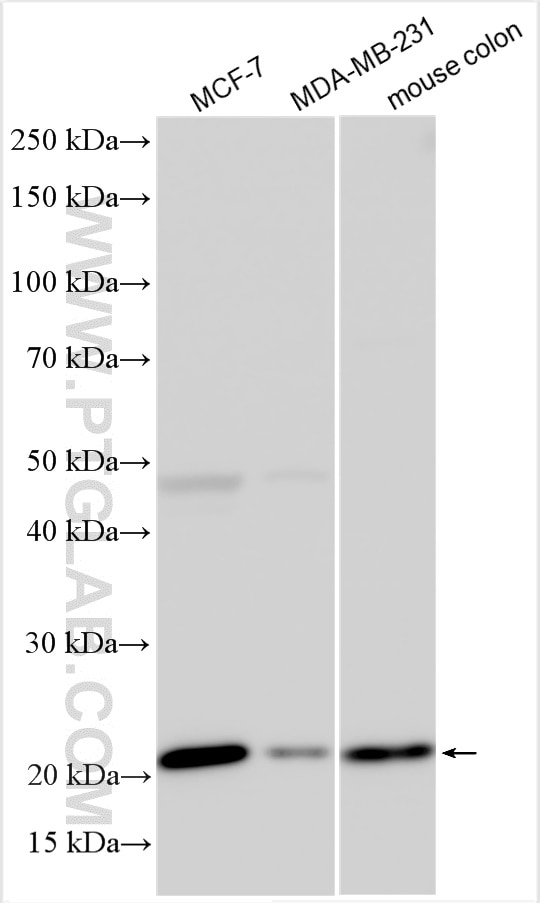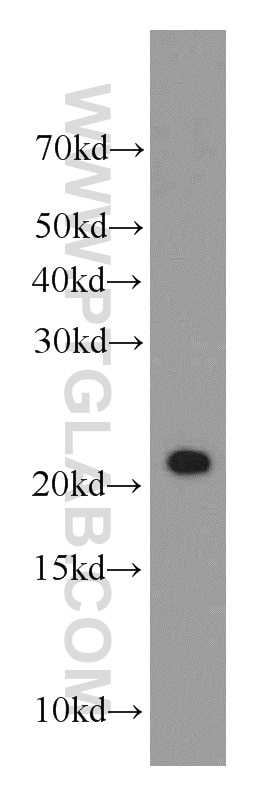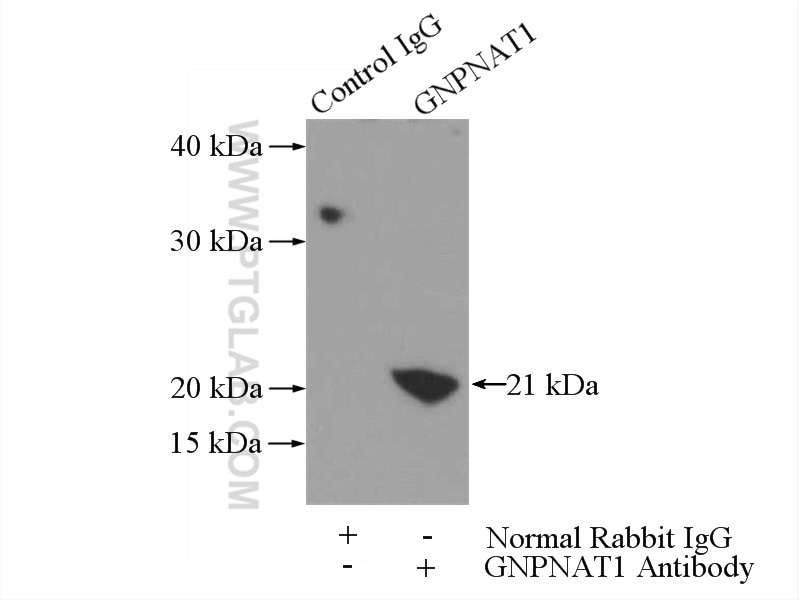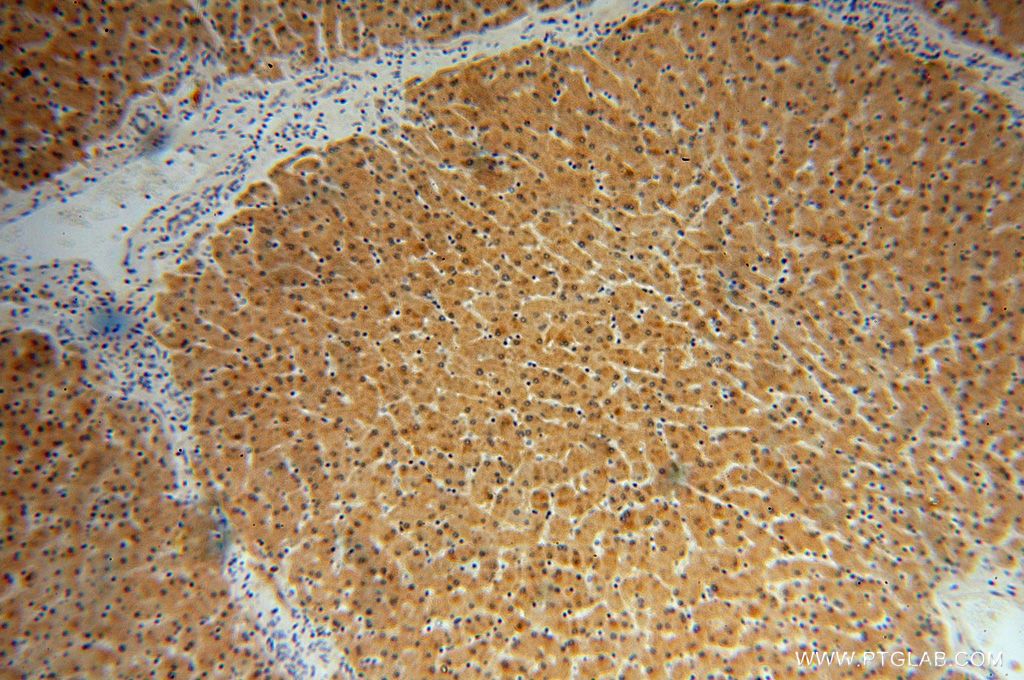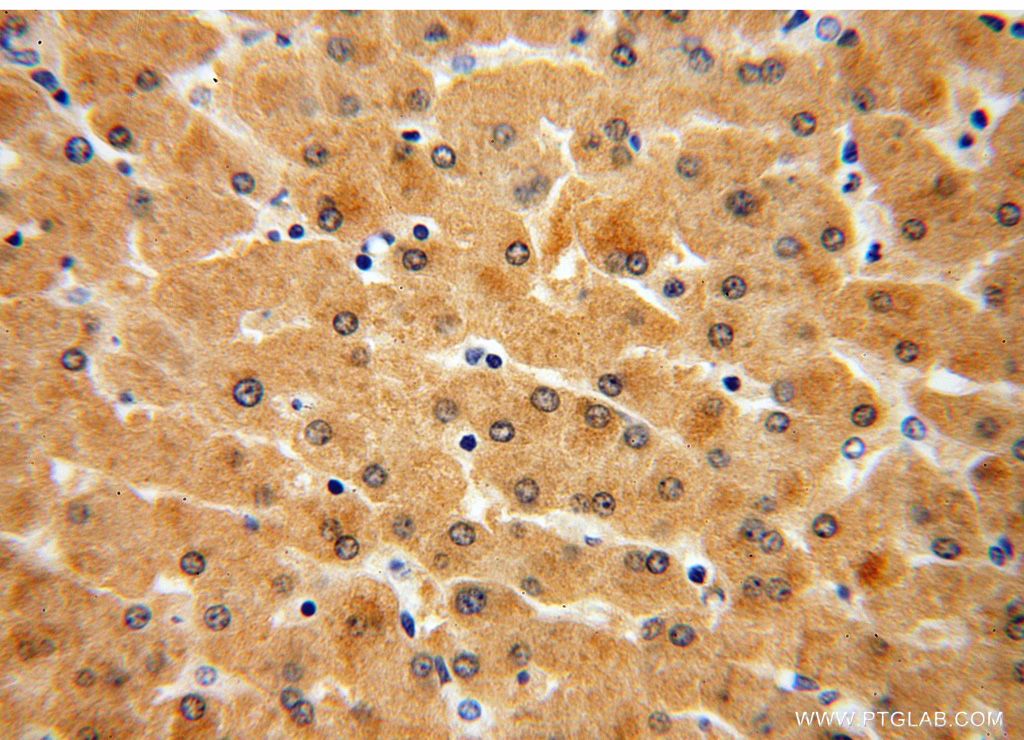Tested Applications
| Positive WB detected in | MCF-7 cells, mouse large intestine tissue, MDA-MB-231 cells, mouse colon tissue |
| Positive IP detected in | mouse large intestine tissue |
| Positive IHC detected in | human liver tissue Note: suggested antigen retrieval with TE buffer pH 9.0; (*) Alternatively, antigen retrieval may be performed with citrate buffer pH 6.0 |
Recommended dilution
| Application | Dilution |
|---|---|
| Western Blot (WB) | WB : 1:500-1:1000 |
| Immunoprecipitation (IP) | IP : 0.5-4.0 ug for 1.0-3.0 mg of total protein lysate |
| Immunohistochemistry (IHC) | IHC : 1:20-1:200 |
| It is recommended that this reagent should be titrated in each testing system to obtain optimal results. | |
| Sample-dependent, Check data in validation data gallery. | |
Published Applications
| KD/KO | See 2 publications below |
| WB | See 7 publications below |
| IHC | See 6 publications below |
| IF | See 1 publications below |
Product Information
16282-1-AP targets GNPNAT1 in WB, IHC, IF, IP, ELISA applications and shows reactivity with human, mouse, rat samples.
| Tested Reactivity | human, mouse, rat |
| Cited Reactivity | human, mouse |
| Host / Isotype | Rabbit / IgG |
| Class | Polyclonal |
| Type | Antibody |
| Immunogen |
CatNo: Ag9375 Product name: Recombinant human GNPNAT1 protein Source: e coli.-derived, PET28a Tag: 6*His Domain: 1-184 aa of BC012179 Sequence: MKPDETPMFDPSLLKEVDWSQNTATFSPAISPTHPGEGLVLRPLCTADLNRGFFKVLGQLTETGVVSPEQFMKSFEHMKKSGDYYVTVVEDVTLGQIVATATLIIEHKFIHSCAKRGRVEDVVVSDECRGKQLGKLLLSTLTLLSKKLNCYKITLECLPQNVGFYKKFGYTVSEENYMCRRFLK Predict reactive species |
| Full Name | glucosamine-phosphate N-acetyltransferase 1 |
| Calculated Molecular Weight | 184 aa, 21 kDa |
| Observed Molecular Weight | 21-23 kDa |
| GenBank Accession Number | BC012179 |
| Gene Symbol | GNPNAT1 |
| Gene ID (NCBI) | 64841 |
| RRID | AB_2110243 |
| Conjugate | Unconjugated |
| Form | Liquid |
| Purification Method | Antigen affinity purification |
| UNIPROT ID | Q96EK6 |
| Storage Buffer | PBS with 0.02% sodium azide and 50% glycerol, pH 7.3. |
| Storage Conditions | Store at -20°C. Stable for one year after shipment. Aliquoting is unnecessary for -20oC storage. 20ul sizes contain 0.1% BSA. |
Background Information
Glucosamine-6 phosphate-N-acetyl Transferase (GNPNAT1) is a key enzyme in the hexosamine biosynthetic pathway. It converts D-glucosamine 6-phosphate to N-acetyl-D-glucosamine 6-phosphate, the acetylation step allowing carbon and nitrogen enter into the hexosamine biosynthetic pathway. Recently inhibition of GNPNAT1 has been reported to promote proliferation and aggressiveness of castration-resistant prostate cancer. (27194471) GNPNAT1 is a small dimeric protein localized in the Golgi and endosome membranes.
Protocols
| Product Specific Protocols | |
|---|---|
| IHC protocol for GNPNAT1 antibody 16282-1-AP | Download protocol |
| IP protocol for GNPNAT1 antibody 16282-1-AP | Download protocol |
| WB protocol for GNPNAT1 antibody 16282-1-AP | Download protocol |
| Standard Protocols | |
|---|---|
| Click here to view our Standard Protocols |
Publications
| Species | Application | Title |
|---|---|---|
Cell Res Mannose antagonizes GSDME-mediated pyroptosis through AMPK activated by metabolite GlcNAc-6P | ||
Nat Commun Inhibition of the hexosamine biosynthetic pathway promotes castration-resistant prostate cancer.
| ||
Front Immunol Risk stratification based on DNA damage-repair-related signature reflects the microenvironmental feature, metabolic status and therapeutic response of breast cancer | ||
Front Aging Neurosci Identification of a Novel Hemizygous SQSTM1 Nonsense Mutation in Atypical Behavioral Variant Frontotemporal Dementia. | ||
Front Mol Biosci Upregulation of GNPNAT1 Predicts Poor Prognosis and Correlates With Immune Infiltration in Lung Adenocarcinoma. | ||
Sci Adv Targeting PGM3 abolishes SREBP-1 activation-hexosamine synthesis feedback regulation to effectively suppress brain tumor growth |

